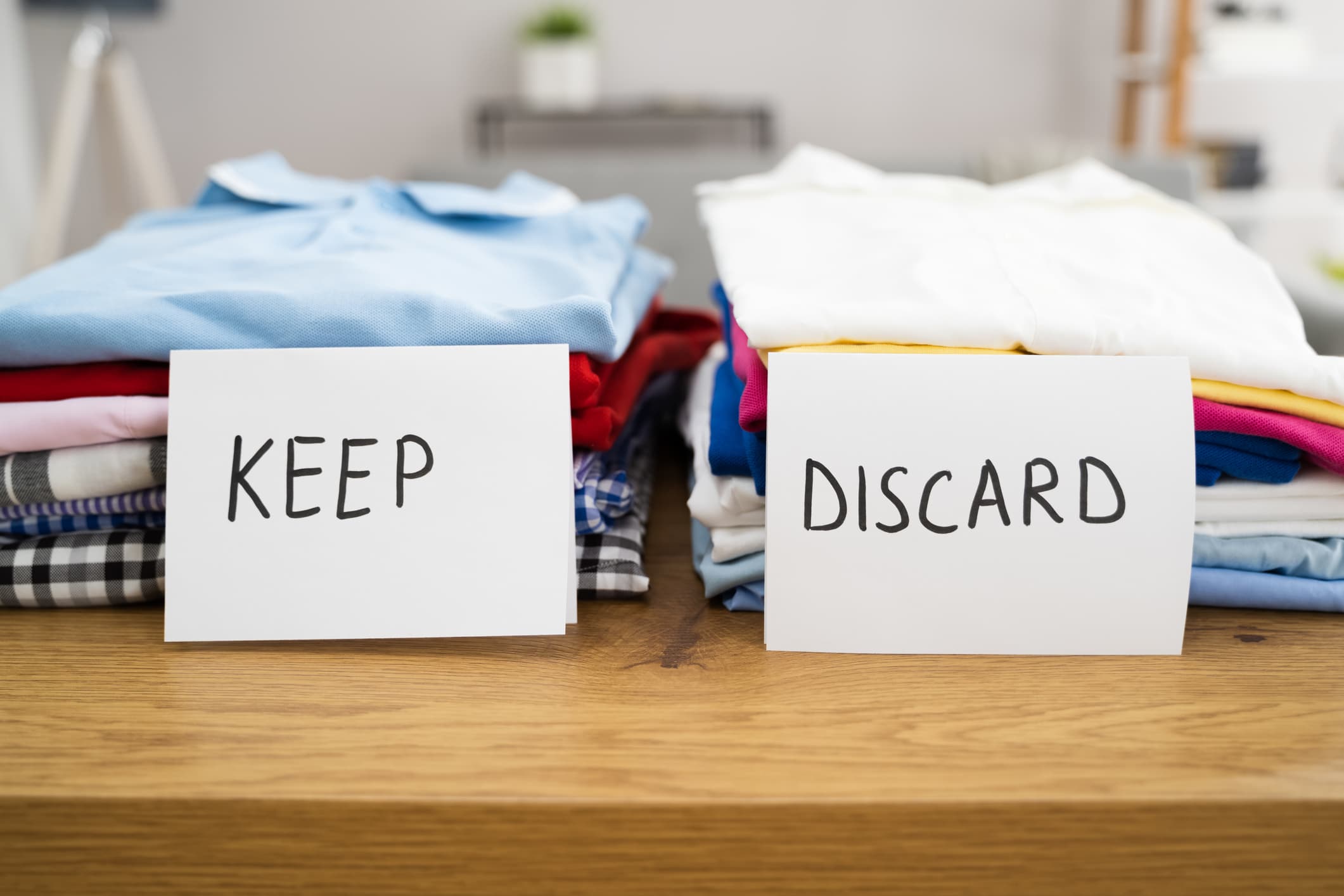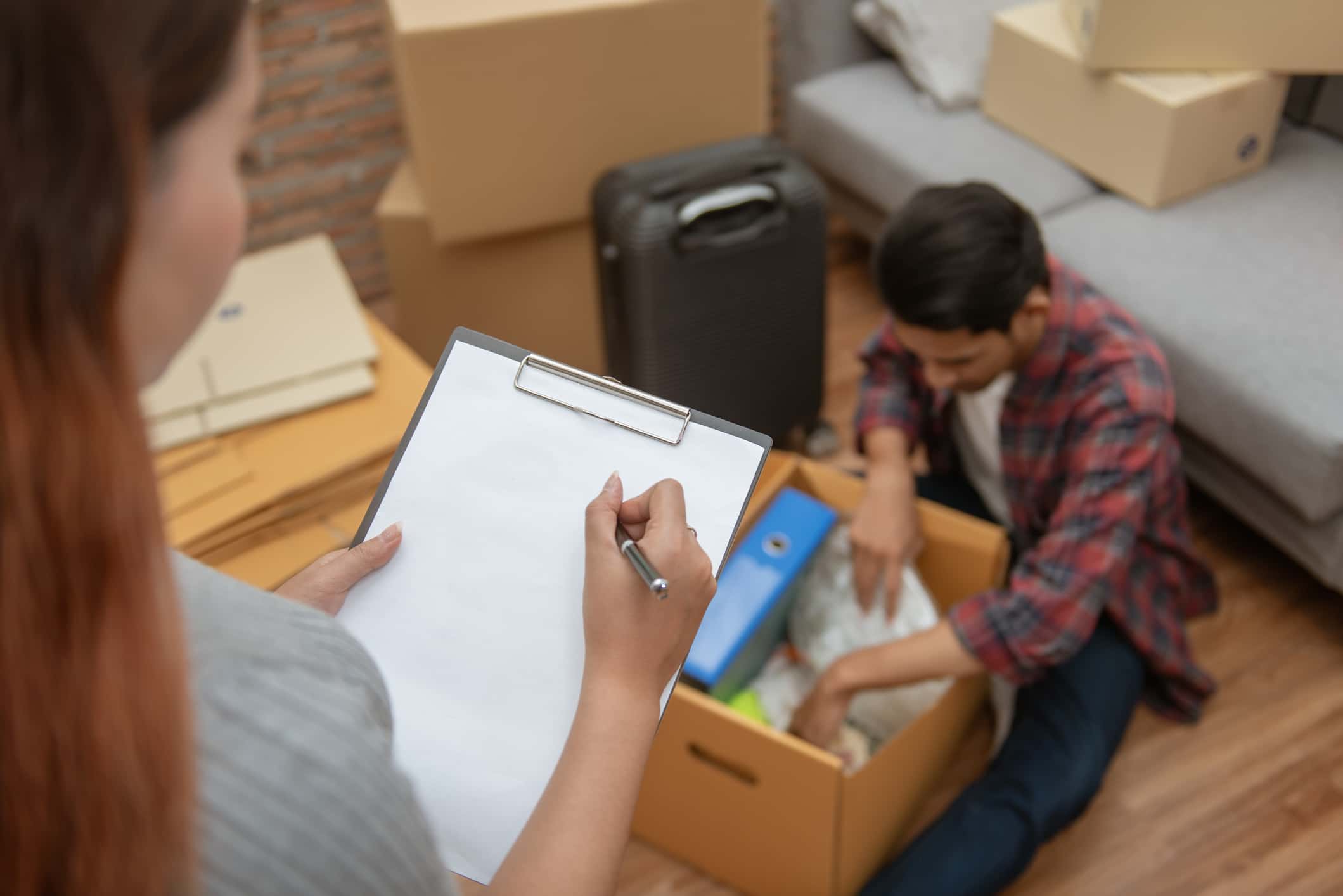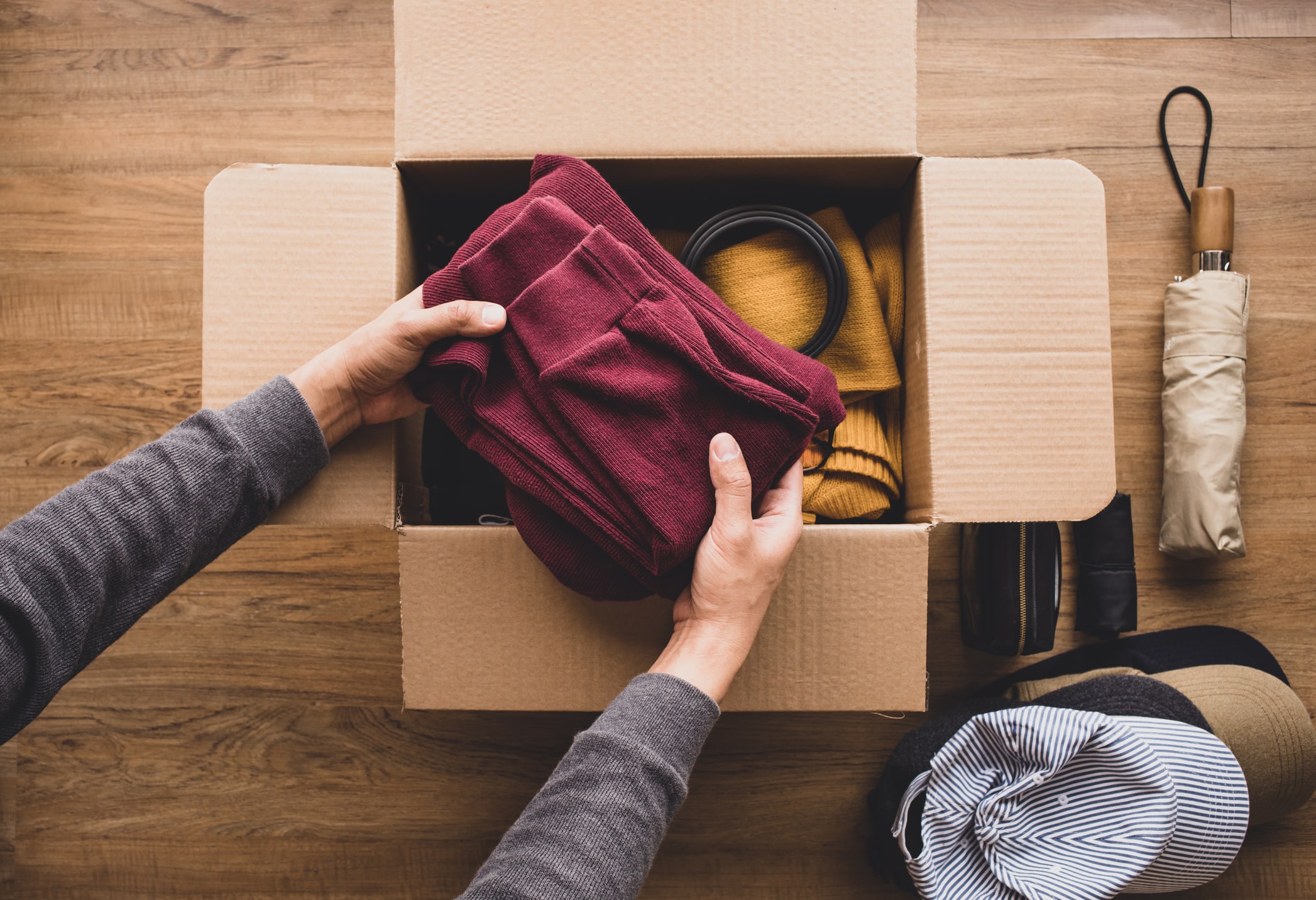Tedious, boring, exhausting — packing for a move can feel like a chore, but it's also vitally important if you want all your stuff to arrive in one piece.
A recent survey found that almost 40 percent of Americans consider packing the most stressful part of moving. If you’re dreading an upcoming packing job, don’t break out in an anxious sweat just yet. With a little planning and some expert tips, you can make packing much less of a headache.
This comprehensive guide will teach you all the crucial ins-and-outs of how to pack for a move. We’ll give you advice on how to keep your stuff — and your sanity — intact, right down to room-by-room packing instructions.
So, take a few calming breaths, and let’s jump right in!
General Packing Tips to Start You Off
Before we dive into the room-by-room logistics of how to pack for a move, it helps to start with some basic guidelines. The seven tips below will hopefully make the process feel less daunting, setting you up for a successful and stress-free moving experience.

1) Declutter Before You Pack
We’re all holding on to things we don’t need. You know that box filled with old USB cables and your broken iPod from 2012? Now is a great time to get rid of that stuff. Before you pack a single box, take a look at your belongings, and begin mentally sorting them into three categories: “Keep,” “Toss,” and “Donate.”
This is no time to be sentimental, so be ruthless. If you can lighten the load even by just a few items, packing will be that much easier.
2) Assemble All Your Supplies
Be sure you have all the necessary packing materials such as boxes, mailing tape, foam sheets, packing paper, bubble wrap, markers, and labels. Stocking up on these essentials in advance will cut down on time delays or interruptions once you start packing.
Consider asking around at local shops for spare cardboard boxes. Grocery and liquor stores especially may be glad to hand over a stack of freebies. Also, remember that it’s easy to underestimate the amount of supplies you’ll need; when in doubt, buy extra.
3) Choose the Right Size Box
Whether you use professional movers, or try to do it yourself, someone is going to be risking their spinal health for the sake of your stuff. So pack wisely. Use small boxes for heavier items (e.g., books, kitchenware) and large boxes for lighter items (e.g., linens, clothes, pillows). This will ensure you don’t overstuff a large box that might fail, or even cause injury.
4) Ensure All Boxes Are Stable
Good quality boxes should work without reinforcement. But if in doubt, strengthen the bottom and corners of questionable boxes with mailing tape before you start placing items inside. Secure, stable boxes will protect your items from damage while in transit. Of course, it doesn’t hurt to pack fragile items in a blanket or bubble wrap, too.
5) Transport Items to the Truck in Two Stages
By the time you’re done moving, you’ll be seeing boxes in your dreams. And they’ll all look alike. So when you finish packing a box, clearly label it with the contents and the room it should be placed in at your destination.
Don’t skimp on detail here, either — make sure to note every item or group of items in each box. You should also keep a master inventory list of each box you’ve packed for seamless tracking and convenient unloading once you reach the final destination.
6) Transport Items to the Truck in Two Stages
It’s often easier to move items out of the home to a “staging area” near the truck before loading up. Seeing all your items laid out will help you — or your movers — use their Tetris skills to pack the truck efficiently. Grouping large items together can also help.
Remember to lift safely. That means wearing sturdy shoes, and using your legs to lift rather than your back. Professional movers are used to this kind of lifting, but us mere mortals — not so much. So be careful.
7) Make a “First Night” Box
You’ll definitely want to set aside a box or two with essentials for the first couple of days, and especially the night of your arrival. Toiletries, bedding, towels, and a change of clothes should be on this list. But also think of other items you’ll want easy access to, whether on your first night or the first few days. This might include a shower rod and curtain, frozen dinner, snacks, a coffee maker, coffee mugs, a jug of water, a Wi-Fi hotspot, and chargers.

How to Pack for a Move — Room by Room and Item by Item
Nearly 30 percent of Americans think moving is more stressful than losing a job — but it doesn’t have to be. You just need the right strategy.
Below we’ve identified the rooms where you’ll need to do more than just throw things in a box and call it a day.
How to Pack a Living Room for Moving
Living rooms contain items such as valuable electronics, heavy books, and fragile decorations, all of which require careful handling.
1) How to Pack Books for Moving
Books are like old friends, so give them the care and protection they deserve with these useful tips. After all, you want their covers intact to display on that new bookshelf, right?
Place your books either spine-down or flat on their faces in a small, sturdy box.
Fill any gaps with blankets, towels, or packing paper to secure the books tightly and protect them from damage while in transit.
If you have delicate or valuable books, write “fragile” on the box for careful handling.
Remember that books are dense. These boxes will get heavy quickly, so use small boxes and don’t overdo it.
Check out this video tutorial on how to transport books if you need further instructions.
2) How to Pack a TV for Moving
TVs are both very expensive and very delicate — and that’s not a good combination when you’re moving. Take the following precautions so your TV and its accessories arrive in one piece, and you can get back to binging Netflix as soon as possible. New surroundings, same priorities!
Unplug all the TV cords, then wrap them securely and place in a ziplock bag.
Label your cables, especially things like power adapters that aren’t interchangeable between devices. Otherwise they’ll all look alike when you need to rebuild your setup.
Place the remote and other TV accessories in another ziplock bag.
Cover the screen with a blanket to prevent scratches.
Either pack the TV in its original box or use a large foam-lined box that’s specifically made for transporting TVs and monitors.
Label the box “fragile” and ensure it’s positioned upright in the truck.
Want a few more pointers? Here is some additional information on how to pack a TV for moving.
3) How to Pack Lamps for Moving
Like Brick Tamland of Anchorman, many of us truly do love lamp. So treat those lamps with respect. The tips below will help you pack both small, compact table lamps and tall, heavier floor lamps.
Remove the bulb and lamp shade, then pack them separately in bubble wrap.
Wrap the lamp base in soft but protective material like a towel or blanket, and place it inside a tall, sturdy box.
Label the box “fragile” and secure it firmly in the truck between other boxes, so the lamp won’t get jostled or sustain any damage while in transit.
Large floor lamps can be awkward to pack into boxes, but they’re usually relatively durable. Try tucking them — standing up — into gaps between boxes inside the moving truck. Just wrap them in paper for protection.
4) How to Pack Plants for Moving
A little greenery can bring life to any indoor space, so make sure your plants live to see their new home. A little extra care is required when we’re talking about a living thing. Also, if you’re moving across state lines, don’t forget to check the state or local guidelines for your final destination. Some exotic plants may not be welcome in your new state. (The USDA website is a good place to start if you have questions.)
Pack your house plants in durable boxes with the pots secure and upright. Plants that tip and spill their soil are bound to suffer.
Pad the base of each pot with foam sheets to prevent shifting while in transit.
Water the plants lightly a couple days before the move and carefully transport them inside your car — not a moving truck.
If you’re moving in cold weather, cover the plants with an insulated but breathable material such as newspaper.
If you’re moving in hot weather, don’t let them stay in your car too long. A hot car can quickly do irreversible damage to sensitive plants.
How to Pack a Bedroom for Moving
Packing a bedroom involves more than just boxing up clothes and linens. You’ll also need to account for jewelry, shoes, accessories, and wall décor.
1) How to Pack Clothes for Moving
Tossing your clothes into garbage bags is certainly one way to move them (and we won’t judge). But wouldn’t you rather keep your favorite outfits wrinkle-free and organized while in route to their new closet?

The following steps have you covered. Just be sure to invest in wardrobe boxes — they contain built-in metal rails for seamless and convenient storage.
Use wardrobe boxes for all the clothes you want to keep on hangers.
Fold or roll up other clothes that don’t require hangers and place them in suitcases, duffel bags, or boxes.
Fill any gaps with small miscellaneous items to maximize the space.
Place foam sheets between delicate or expensive clothing.
If you’re still not quite sure how to pack a wardrobe box, you can learn more right here:
2) How to Pack Shoes for Moving
Shoes could also get the garbage bag treatment, but they’re likely to arrive scuffed and dented. First impressions matter — make sure that your shoe collection arrives in pristine condition, so you’ll be ready to explore the new neighborhood hotspots in comfort and style.
Place your shoes in their original boxes, if possible, or wrap them in packing paper to avoid scuffs.
Layer them in a small box and secure them with shoe organizers or foam separators.
Fill any gaps with socks or other soft items for extra protection.
To maintain the shape and quality of each shoe, be sure not to overstuff your boxes.
3) How to Pack Jewelry for Moving
From expensive rings and heirloom necklaces to statement bracelets and flashy earrings, here’s how to pack jewelry with the care and precision it needs.
Wrap each piece of jewelry in packing paper to avoid tangles or scratches.
Place the jewelry in a secure, labeled container to keep it all organized.
Transport this container with you in the car — especially if the items are valuable.
4) How to Pack Décor for Moving
Picture frames, mirrors, vases, wall art, and other decorative pieces make a bedroom feel cozy and inviting. So, be sure to treat them with TLC throughout your move.
Use a blanket, towel, or bubble wrap to avoid damage to breakable items.
Pad the bottom of each box with foam sheets, then place the décor inside.
Place more foam sheets between them to prevent shifting while in transit.
Label each box “fragile” to ensure careful handling.

How to Pack a Kitchen for Moving
Kitchens pose a lot of packing challenges, from sharp knives that can be dangerous if not handled properly, to delicate items like glasses and dishes. Take your time and pack carefully here to avoid the worst.
1) How to Pack Cookware for Moving
Whether it’s the cast iron skillet you use for weekend brunch or the essential pot for your famous homemade chili, ensure all cookware is stovetop-ready. Remember, despite your best efforts, some of these items may remain in boxes for a while. Leaving stray food bits on your pans is just asking for pests and mold.
Stack your pots and pans together in a small, sturdy box.
Place foam sheets between each item to avoid scratches.
Fill any gaps with kitchen towels, oven mitts, cutting boards, or other small items.
Wrap the lids separately and store them near the top.
Ensure there’s no wasted space — pack smaller items inside large pots.
2) How to Pack Utensils for Moving
Small utensils and other miscellaneous kitchen tools can be hard to keep track of during a move, so it’s best to consolidate them as much as possible. Here’s how to do this both quickly and efficiently.
Separate utensils into four categories: forks, spoons, knives, and cooking tools (e.g., ladles, whisks, spatulas, measuring cups, etc.).
Secure each group with a rubber band or mailing tape to keep them organized.
Place these bundles in a small box or container.
Fill any gaps with packing paper or kitchen towels to prevent shifting while in transit.
Make sure to pack sharp knives in their own separate, sturdy, puncture-resistant container within the cardboard packing box. Knives with exposed tips or edges can poke dangerously through cardboard, putting you and your movers at risk.
3) How to Pack Appliances for Moving
That jumbo waffle iron you bought on impulse at 3 a.m. is definitely worth keeping, but kitchen appliances are notoriously cumbersome to transport. From griddles to crockpots, these items can weigh down boxes if you aren’t careful.
The steps below will make packing and moving them feel a whole lot easier:
Unplug each small kitchen appliance (e.g., coffee maker, air fryer, crockpot, etc.).
Thoroughly clean all the appliances before you start packing them. (Seriously, the last thing you need is to open a moldy box a few weeks down the line.)
Cover them with bubble wrap to avoid scratches and place them in a sturdy box.
Fill any gaps with packing paper or kitchen towels to prevent shifting while in transit.
Write handling instructions (like “This Side Up,” “Keep Dry,” etc.) on the box to ensure they’re handled with care. .
4) How to Pack Dishes for Moving
Dishes are tricky items to move, and not only because they’re so delicate. Oftentimes, many pieces also have sentimental value, like the fine china plates you inherited or the porcelain coffee mug you found at an antique shop. But don’t worry — these tips have your back.
Wrap each plate, bowl, platter, and glass in packing paper to avoid cracks and chips.
Stack the dishes vertically in a small, sturdy box.
Place a foam sheet or cardboard separators between them for extra cushioning.
Fill any gaps with kitchen towels, then label the box “fragile.”
Dishes can be surprisingly heavy, so use as many boxes as you need to keep their weight manageable. Also be sure to test the weight as you pack — you don’t want to end up with a backbreaker.
Check out our tutorial to learn more about how to pack dishes.
FAQs: How to Pack for a Move
Hopefully this guide has left you with a clearer understanding of how to pack for a move — but if you still have some questions, don’t sweat it. Whether the upcoming move is out of state or just up the street, here are a few more considerations to account for as you start packing for this major life transition.
How soon should you start packing for a move?
On average, you should start packing the non-essential items that you don’t often use about six or seven weeks in advance. Then, a month before the move, pack the rest of your items and furniture pieces, one room at a time.
Make sure to arrange for all specialty items (e.g., pianos, antiques, artwork, pool tables, etc.) to be transported by a professional service or ensure your mover is experienced in handling specialty and valuable items.
Finally, pack the most valuable or essential items like birth certificates, family heirlooms, or crucial documents in the last two or three weeks leading up to your move. Use this timeline for a smooth process that’ll keep your move right on schedule.
What is the fastest way to pack for a move?
The quickest and most efficient way to pack for a move is to focus on simplicity. Basic strategies such as decluttering your home, assembling all the materials and supplies in advance, packing just what you need, and boxing up items one room at time will streamline the whole process.
Moreover, labeling the contents of each box and keeping an accurate inventory will make it faster to unpack and sort through items once you reach that final destination.
What is the hardest room to pack when moving?
The kitchen is generally the hardest room to pack due to the sheer variety of items — many of which require careful handling, such as dishes, glasses, and even fine china sets.
Most kitchens also contain awkwardly shaped items or heavy cookware and appliances that take serious effort to transport. Chances are, you’ll have to deal with any perishable foods before the move as well. These time-consuming steps can make boxing up and clearing out your kitchen one of the most difficult rooms in the house to tackle, if not the most.
What is the best way to pack a house for moving?
If packing for a move causes you to feel overwhelmed, the best strategy is to break it down into bite-sized increments. Once you determine which items to pack, and assemble all the supplies you’ll need, start with an area of the house like your garage, basement, attic, or guest room. Because these spaces are often used for storage, many of their contents might be in boxes or containers already.
Once you build some momentum, transition to those lived-in spaces, such as your bedroom, kitchen, and living room. Want further details on how to pack for a move? Follow this helpful checklist, and the entire process will become more manageable.

Streamline Your Packing for a Successful Move
Now that you know the basics of how to pack for a move, handling it on your own might seem like the most practical, budget-friendly solution. But time is money when it comes to successfully launching a new chapter and settling in as quickly as possible.
That said, packing can often be the most tedious part of any move, so leave this process to the professionals at Colonial. Our expert packing techniques ensure all your items arrive at their new destination in the exact same condition as when they left. Contact our team for a free quote today, and let us take care of the packing for a seamless move, from start to finish.

